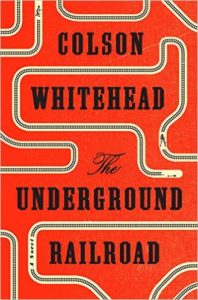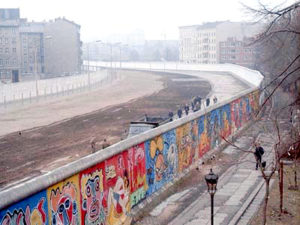
By Nick Hubble
The Underground Railroad — Colson Whitehead (Fleet)
 At the climax of Whitehead’s deservedly award-winning novel, the slave-catcher, Ridgeway, cannot resist the temptation to explain his own cleverness to the escaped slave, Cora:
At the climax of Whitehead’s deservedly award-winning novel, the slave-catcher, Ridgeway, cannot resist the temptation to explain his own cleverness to the escaped slave, Cora:
‘Most people think it’s a figure of speech,’ he said. ‘The underground. I always knew better. The secret beneath us, the entire time. We’ll uncover them all after tonight. Every line, every one.’
His claim directly addresses the central conceit of the novel that the networks and routes by which African-American slaves escaped to the free states and the North exists as an actual underground railroad with stations and steam locomotives on rails. However, his mistake lies in imagining that the workings of the railroad can be reduced to information as legible as a map and a timetable. Earlier in the novel, when Cora visits this particular ‘ghost tunnel’ for the first time with the railroad operative, Royal, she reflects that the necessary secret of the railroad is not a bad type of secret but rather an intimate part of the self that is central to personal identity: ‘It would die in the sharing.’ The enigma of the railroad, as Royal observes, is that ‘it goes everywhere, to places we know and those we don’t’. The challenge it presents is not to classify it as a system of knowledge but to figure out both how it connects the different selves who use it and where it might lead to.
The places that the railroad does take Cora during the course of the novel are not just different geographical locations but also different temporalities from alternative historical tracks. In that sense, every destination is always both literally and figuratively a different ‘state’. These different states represent different Americas, marked by different systems of racism, such as scientific racism, genocidal racism, and even in one case the kind of dystopian, apocalyptic landscapes fetishized by novels such as The Road. Therefore, on one level, the novel is about the clash of competing types of social organisation. This is made most explicit in a conversation between Cora and Ridgeway at a time when she is his prisoner. He talks of ‘Manifest Destiny’ and the divine ‘American imperative’ to conquer, build, civilise and subjugate or destroy anyone that gets in the way. She asks to visit the outhouse. The conversation continues, with Ridgeway outside the door and Cora inside, to the accompaniment of music from a nearby dance, which causes her to muse whether his words are the truth or just words in comparison to the real conversation of dancing slow with another person.
This counterpointing of Cora and Ridgeway is one of the finest achievements of the novel. It is through the attitudes they share – contempt for the owner of Cora’s plantation, hatred for Cora’s mother – that the story gains a stereoscopic focus. Both are capable of mentally standing outside the situations they are in and seeing the systems in operation around them. Both are capable of decisive and, if necessary, violent action. Through Ridgeway we see what he takes to be the reality of the American imperative: the endless stream of European ships at the Eastern docks disgorging ‘a dirty white flood with nowhere to go but out’. The white fear of losing what they own in the face of a rising black population drives the maintenance of slavery and genocide, in the case of the disturbing scenes set in North Carolina. Through Cora, however, we see how these people clinging to their patches of land are participating in a mass delusional means of convincing themselves they are free because they own something. Escape, she comes to learn, is not just a matter of eluding her pursuers but also of escaping from this deluded idea of what freedom is.
The biggest embodiment of this delusion in the novel is the idea of America itself. When Cora is about to take her first ride on the railroad, the station agent tells her:
‘If you want to see what this nation is all about, I always say, you have to ride the rails. Look outside as you speed through and you’ll find the true face of America.’
When she remembers to follow this advice, however, all she sees is endless darkness as they speed through the tunnels. Despite the forces of darkness, delusion and fear being aligned against her, Cora never gives up. Her ability to see the systems around her allows her to concentrate practical resistance against them. For example, in perhaps the strangest interlude in the novel, Cora works as a live component in a series of museum exhibitions depicting ‘Darkest Africa’, the Atlantic crossing of a slave ship, and slave plantation life in the Southern US. After realising that the constant stream of spectators filing past her are part of the chain keeping her in bondage, she begins to systematically seek out the ‘weakest links’ in the crowd in order to force them to look away by staring unwaveringly into their eyes. In this manner, she is able to chip away at the forces keeping her in place.
It is in recognition of Cora’s capacity for disruption that Ridgeway refers to her and her mother – the only escaped slave he has never managed to recover – as a flaw in the ‘American scheme’. Musing on the scale of the response provoked by just two women, Cora wonders what real hope there can be for a whole African-American community, even as she finds peace amidst the one that has been set up at Valentine’s farm in Indiana. Even before the final reappearance of Ridgeway, a debate about the possible paths to be followed by those in the community has already begun. Should they be cautious and law-abiding and so come to ‘enter into American society as a productive member with full rights’ or should they recognise all these systems and schemes as delusions, in spite of which they still existed? Should they see themselves, Africans in America, as ‘something new in the history of the world, without models for what we will become’? Certainly, Cora is drawn to the possibilities of the future judging from the way she likes the crisp, new pages of the next year’s almanac which Royal gives her. It is this sense of the possibility of a different future that ultimately defines the railroad. The last time she escapes on it in the novel, Cora becomes unsure if she is travelling through the ghost tunnel or actually digging it together with all those other men and women who had helped make it. She realises that by working on it you change yourself because every time you come forth on the other side you are a new person. Of course, there is no way of knowing exactly what lies on the other side but if you have learned to see through one set of delusions, you have more chance of dealing with them when they arise again.
The Underground Railroad is a novel of our times but it also shows that our times are just the latest ‘state’ in which a deeper, darker scheme has reformulated itself. For an America that more clearly manifests its delusional status by the day, Whitehead offers the hope of escape for those prepared to become flaws in the system and to direct their practical resistance to the collective task of tunnelling to a different future.
*
Nick Hubble is an academic working in the English department at Brunel University London, where they teach modern and contemporary literature, including Science Fiction and Fantasy. In addition, they have reviewed SFF for journals including Strange Horizons, Los Angeles Review of Books, Foundation and Vector.
>> Read Nick’s introduction and shortlist.


